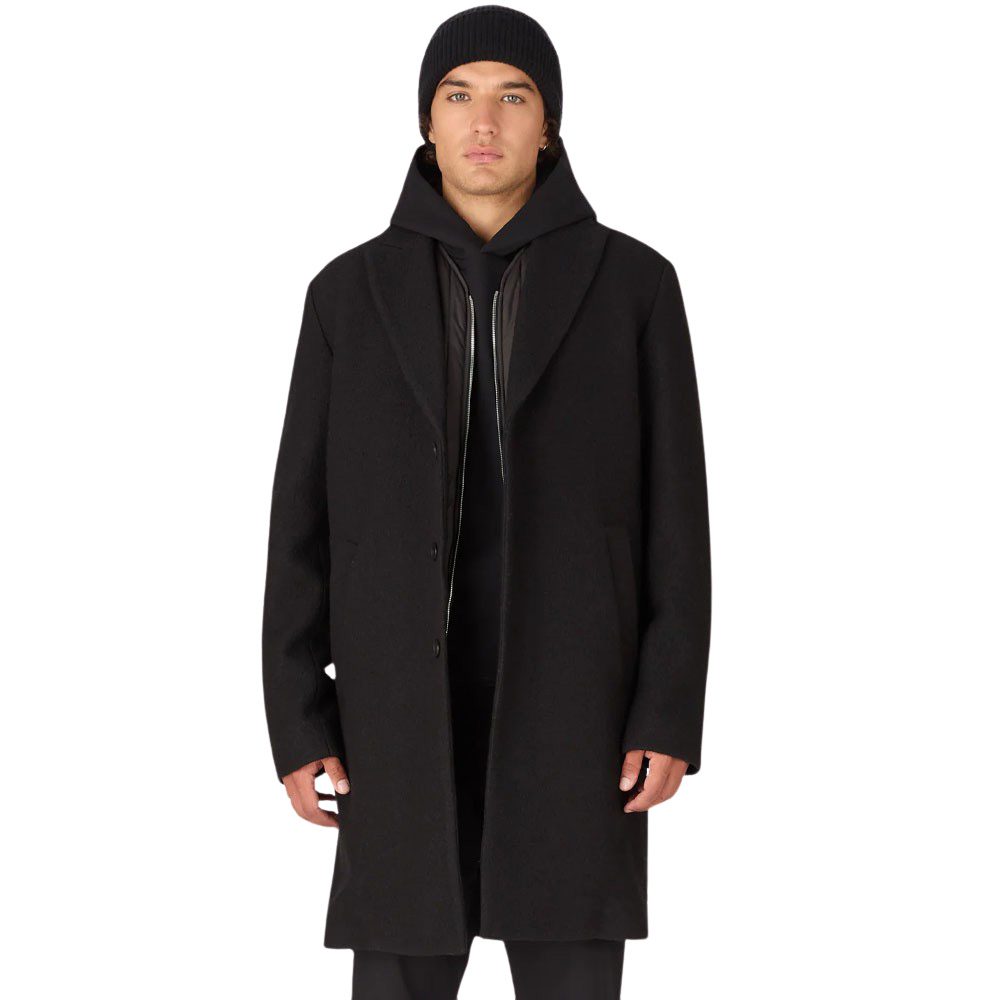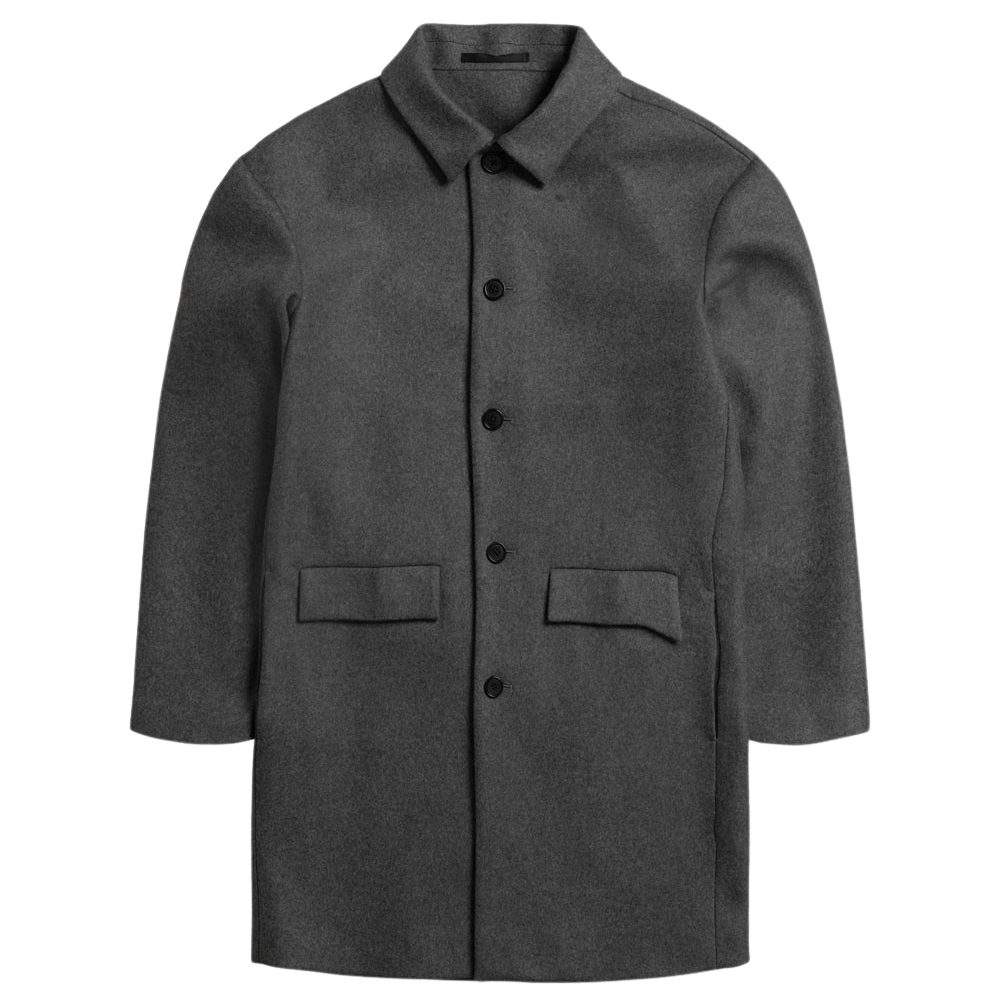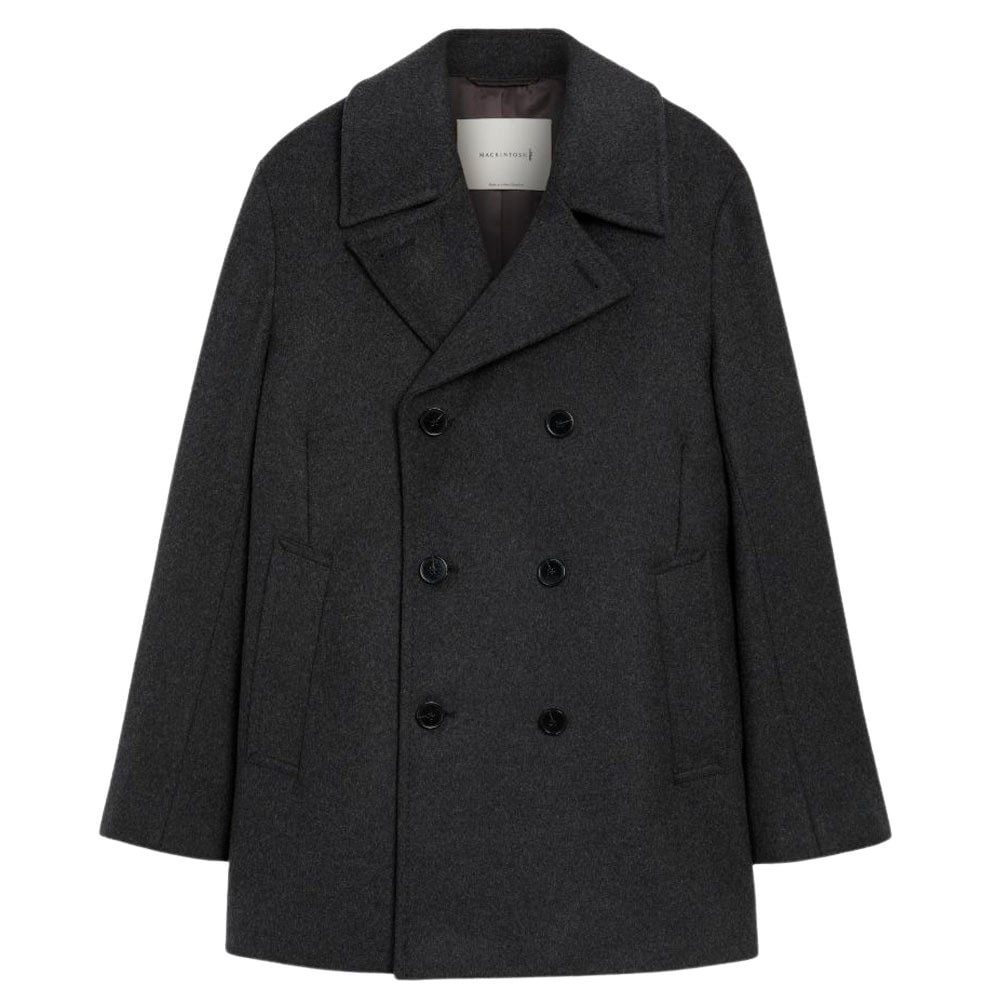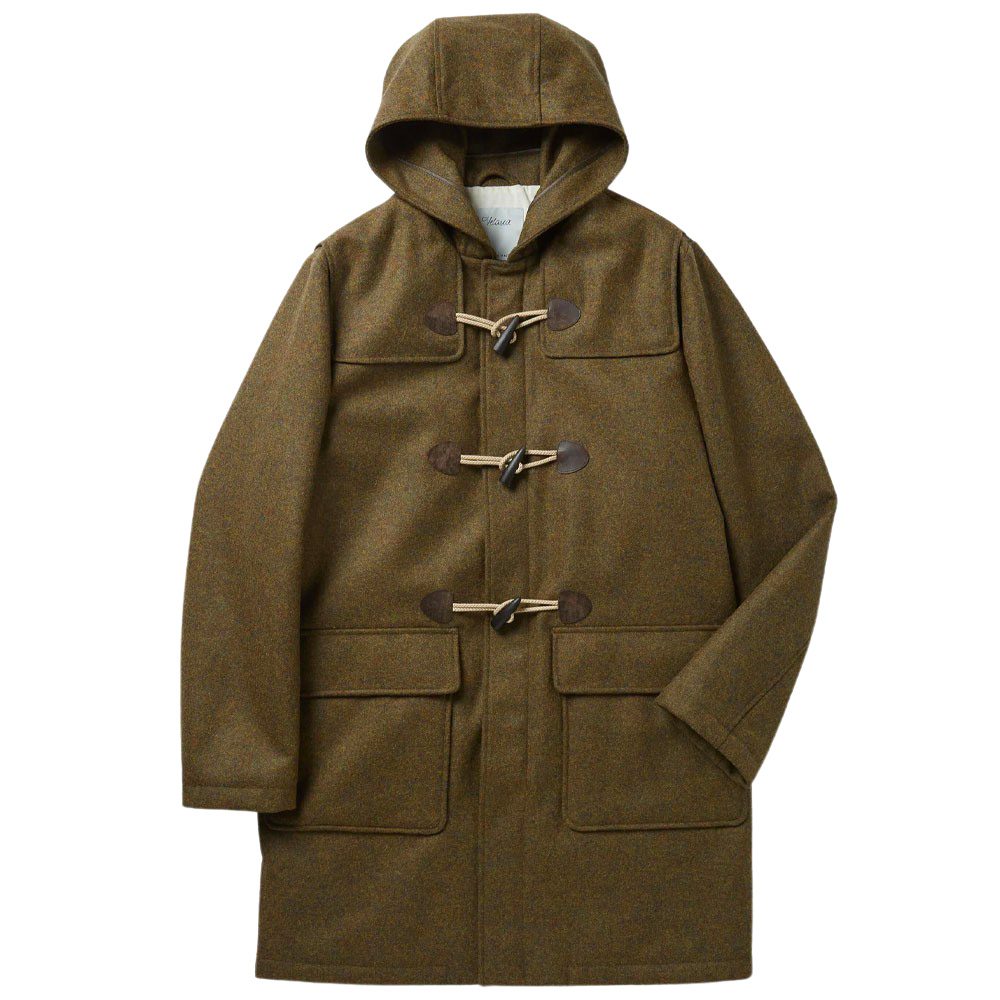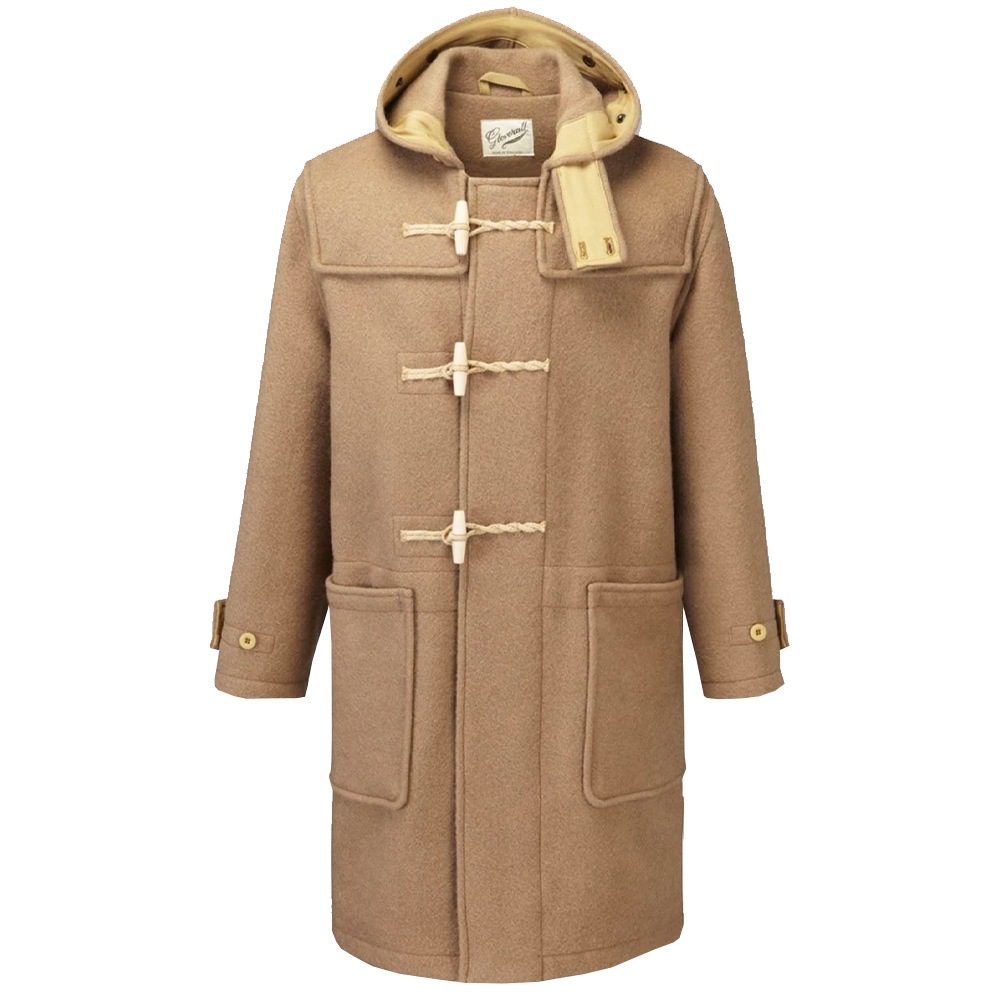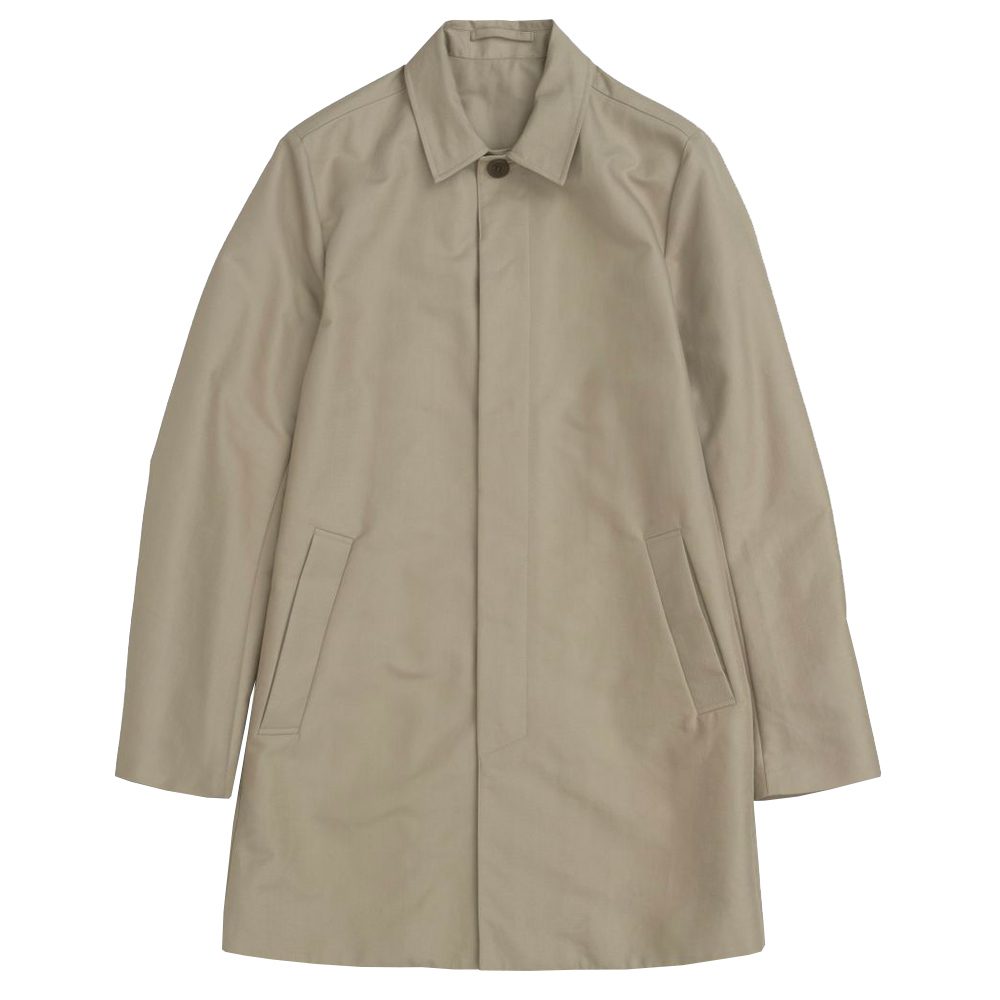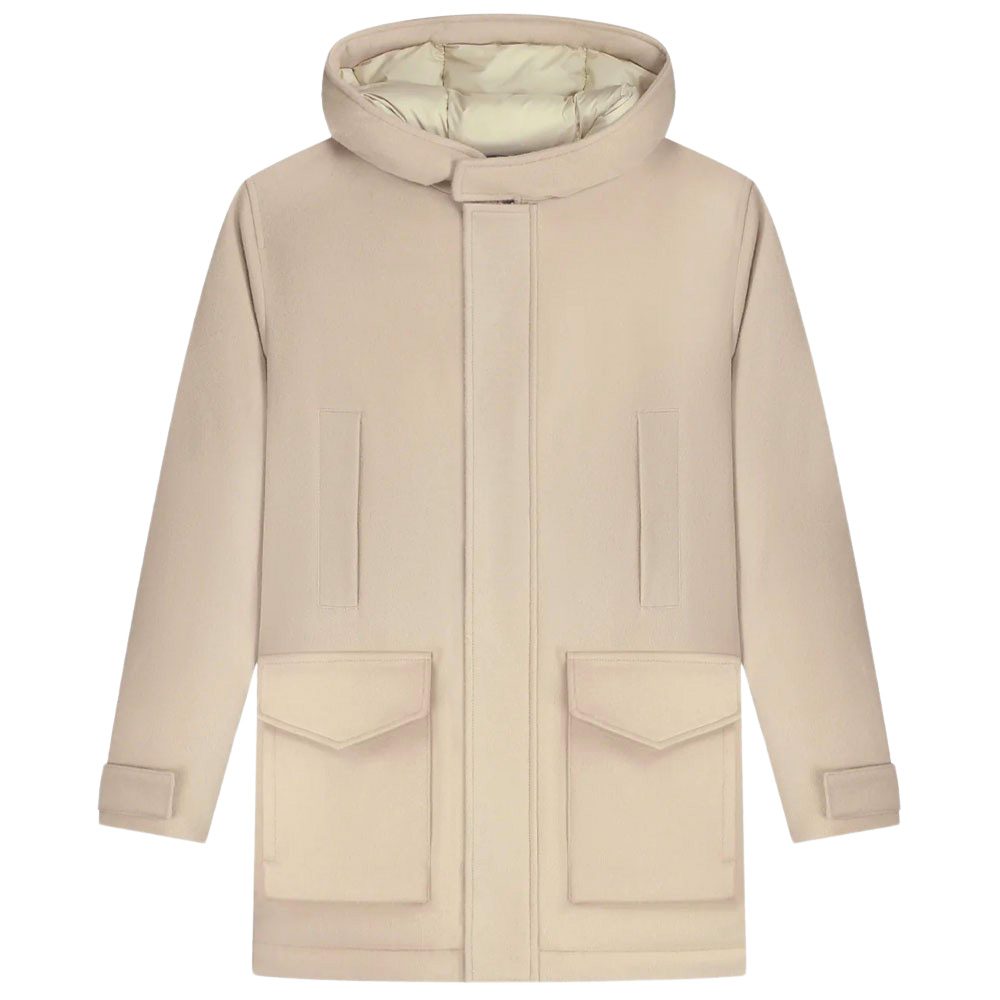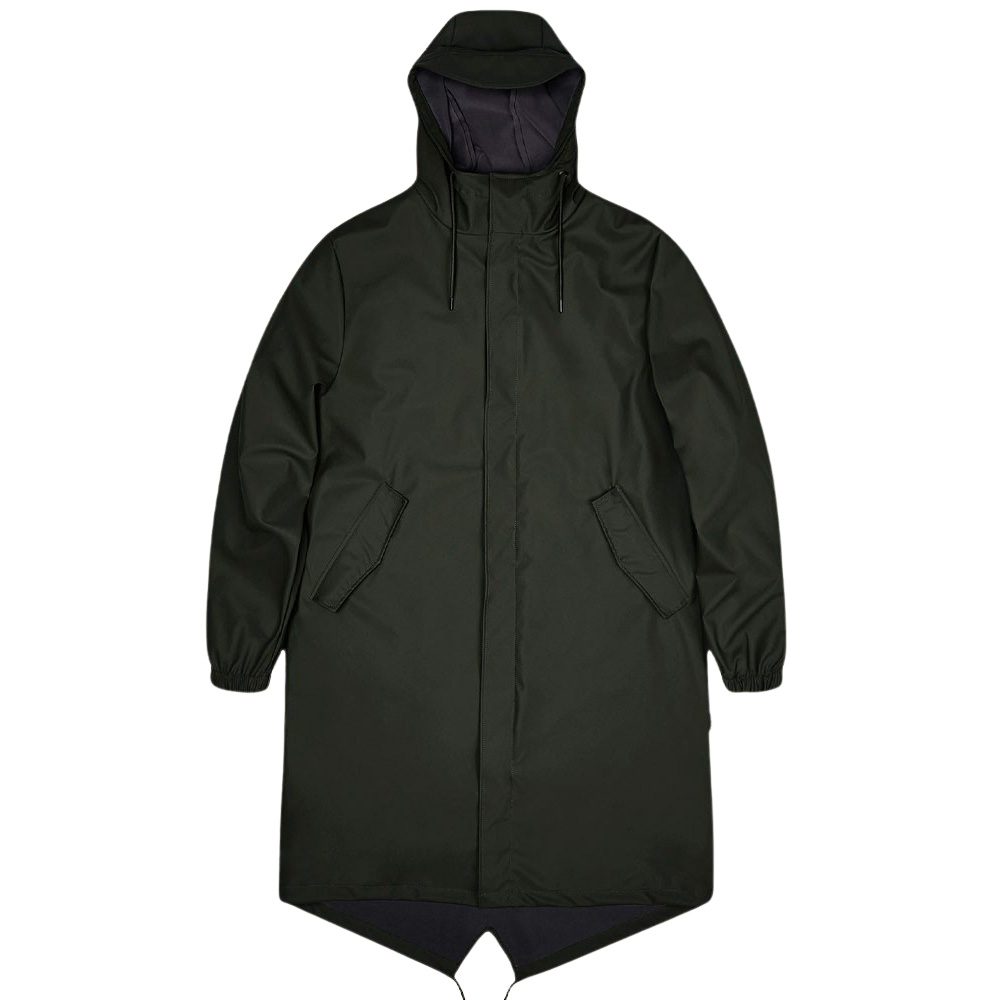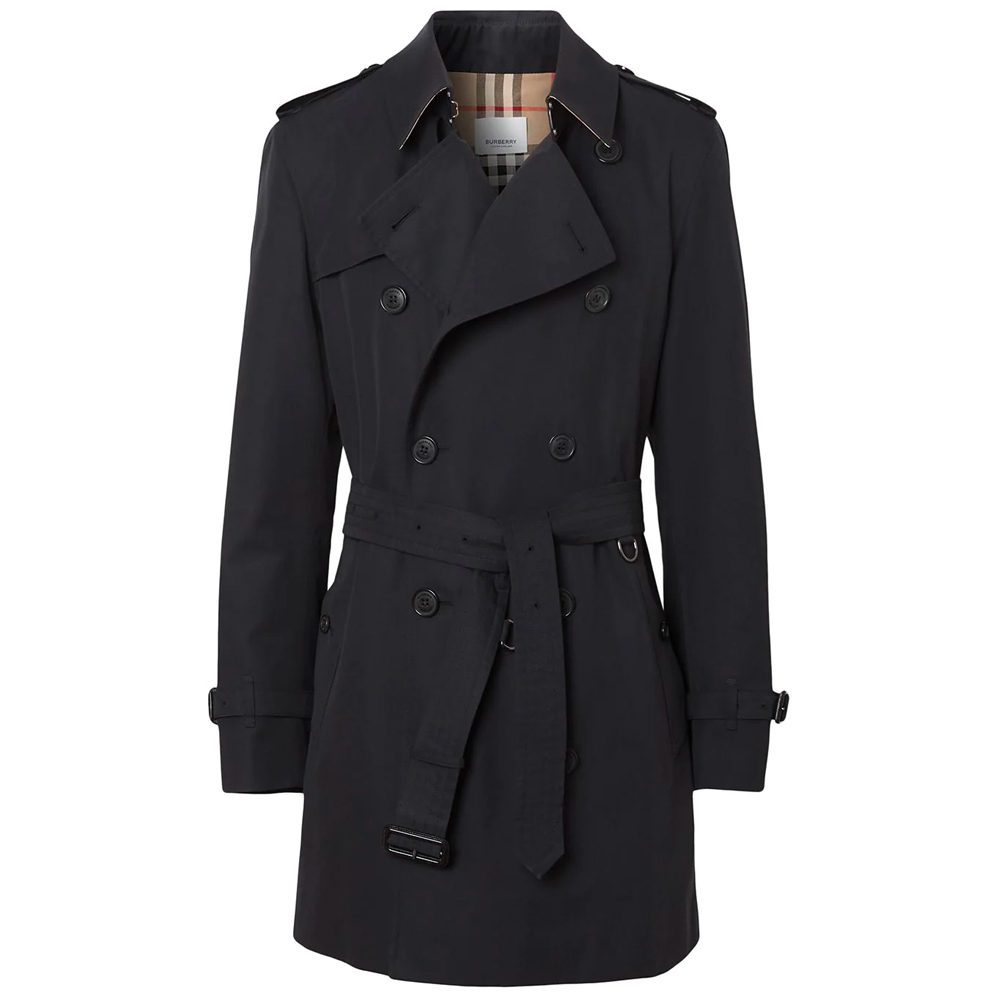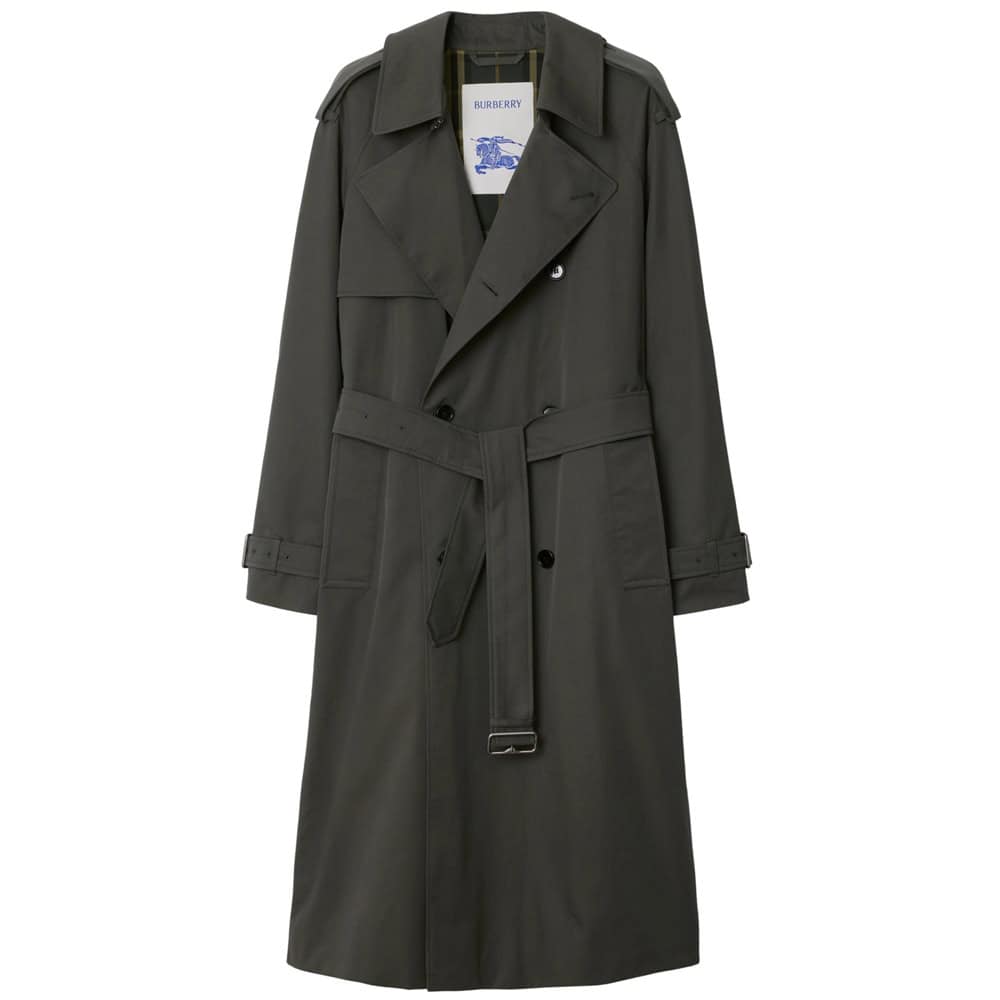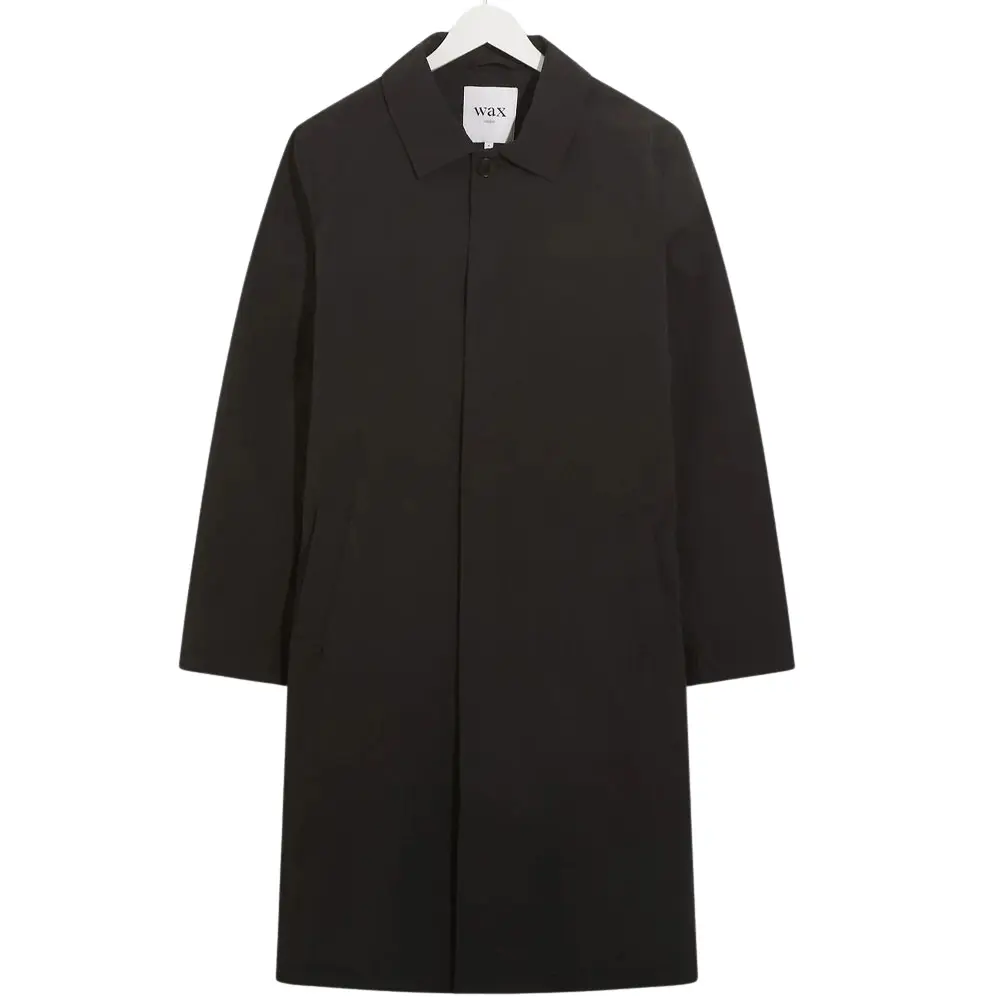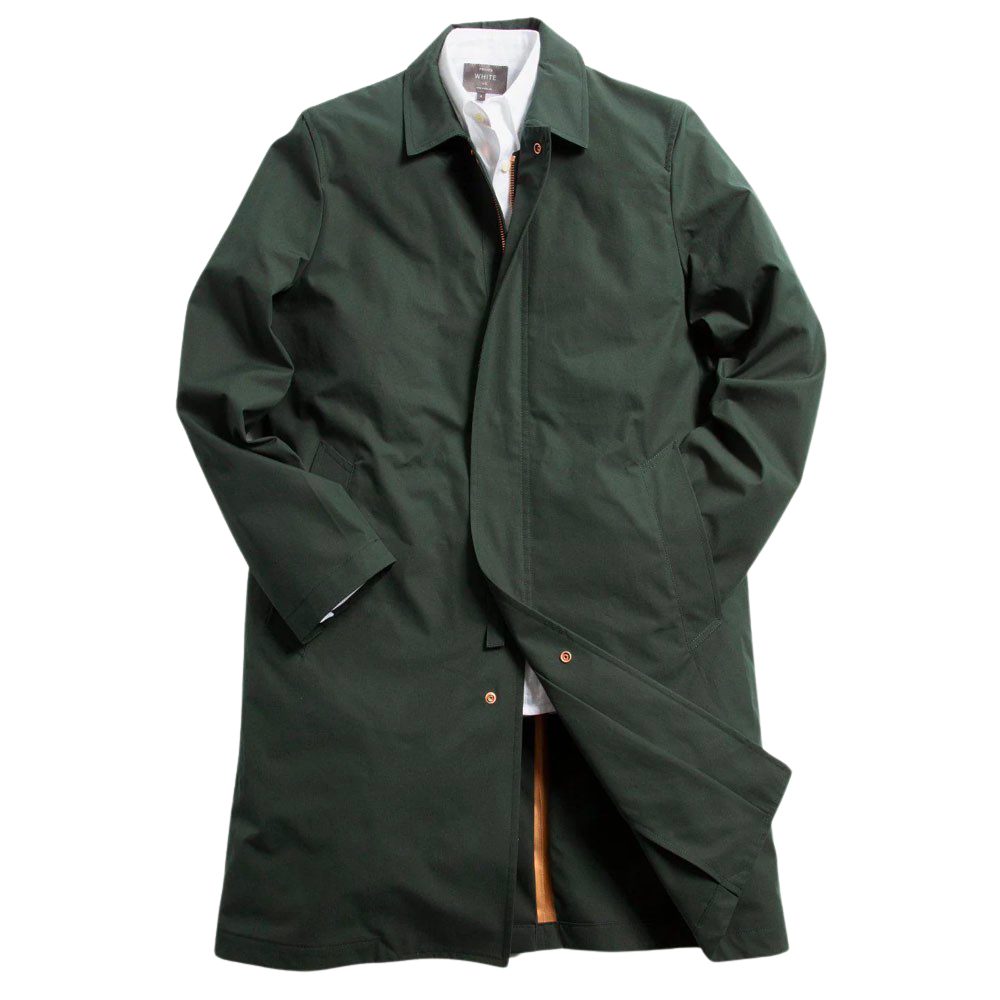The poor overcoat – one of the most important garments in the male wardrobe, yet the one that somehow gets overlooked time and time again. This isn’t to say you don’t have one, of course. Rather than, when you need one, it’s bought less with a sense of excitement as of tedium. One needs an overcoat, rather than wants one. It’s that protective layer required between destinations, where you shrug off the winter weather and unveil the clothing you really like.
And yet the overcoat needs to work in ways few other items of clothing do: it needs to stand up to the elements and be able to take repeated soakings; it needs to stand up to repeated wear, since this is one garment that, unlike most others, gets put on daily; and, for that reason, it needs to look more or less right with most of your clothes, smart and casual.
If you’re buying that cerise, fur-trimmed bum-freezer fashion number, good luck to you. For everyone else – as with shoes, which also have to take a lot of abuse – it pays to invest. A few extra quid is well worth it if you’re buying classics such as those listed below.
Buying Considerations
Buying an overcoat is one of the Big Purchases. An investment. Get it wrong and you might as well have spent the money on some winter sun. Get it right, however, and not only will it last years, but during that time, you’ll feel like Al Pacino every time you walk into a bar.
Here’s what to think about as you’re browsing the rails.
When You’ll Wear It
LESTRANGE
The big one, really. If this is part of your professional wardrobe to wear over a suit on the commute, think tailored. Look at crombies, trench coats and maybe oversized belted options.
If it’s for standing around the playground while your kids go crazy, consider a duffel or parka. It’ll be easy to scrub the mud off and plus-size pockets will store snacks, toys, maybe even a hip flask if it’s been one of those weeks.
Material
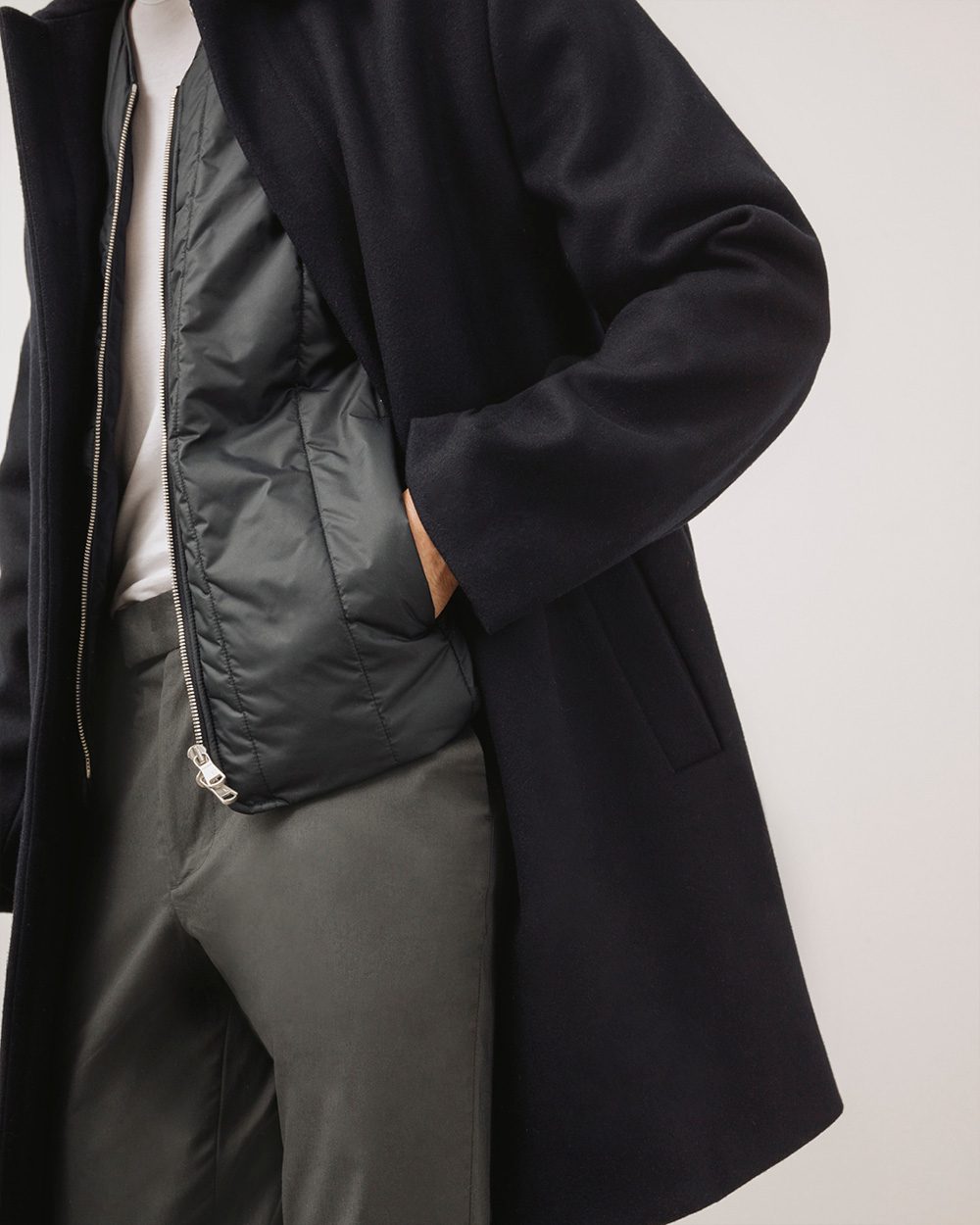
LESTRANGE
What’s the coat’s function, aside from making you look good? A waterproofed gabardine trench will keep you dry in a squall, but you’ll need to layer some knitwear underneath when the temperature drops.
A padded parka will insulate all day long but you won’t want to be trapped in one on a packed commuter train. Wool is a good middle ground. It’ll soak more rainfall than you’d expect and keep you warm on early-morning dog walks, too.
Colour

Velasca
Lots to consider here, not least your skin tone and what the rest of your wardrobe looks like. The staples are grey and navy, both more versatile than black and safer than camel or coffee tones. Not that you have to play it safe these days.
Primary colours are easier to pull off with outerwear (see bright yellow windbreakers). If that’s a bit much, khaki green offers something different without taking a huge gamble, just as it does with your legwear. Or you can add interest with pattern: checks, herringbone and mottled effects disrupt stuffy officewear and predictable streetwear alike.
Length
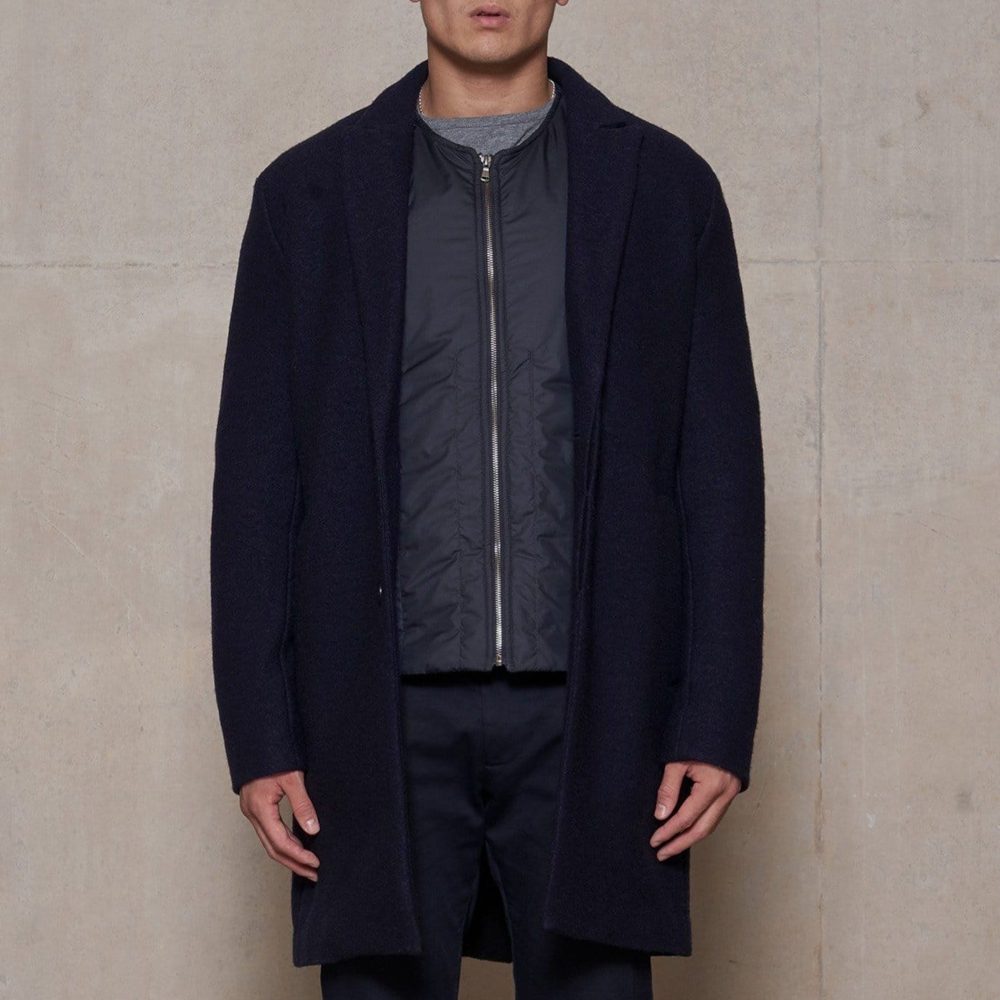
LESTRANGE
This one is mainly a question of proportion. Tall guys are (usually) best aiming for longer coat styles, the hem landing somewhere on the mid-thigh. This adds a horizontal break to your look.
Shorter men should do the opposite and opt for cropped styles unless you’re wearing a suit, in which case you need something that covers your jacket.
The Covert/Crombie Coat
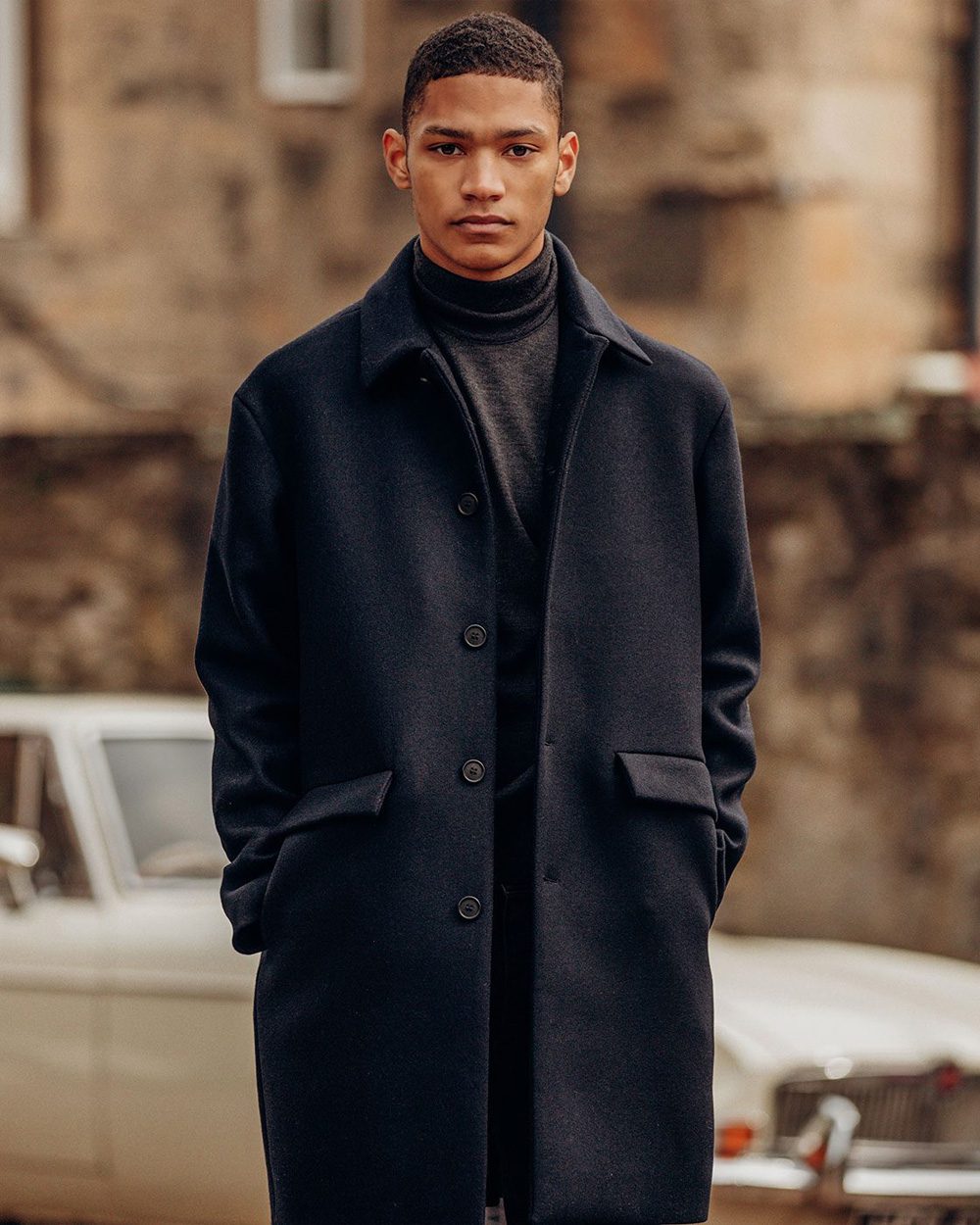
ASKET
Thank Scottish weaver John Crombie, and a request from the Russian royal family for a coat suitable for wear in the country, for the covert coat. It’s named from the French “couvert” (a shady place or thicket) with its contrast velvet collar, ticket pocket, poacher’s inside pocket, distinctive bands of reinforcing stitching at cuff and hem and created in a smooth, thorn-proof, fawn or charcoal fabric.
This single-breasted, sometimes button-covered covert coat became the template for the Crombie coat – essentially the same design but in a heavier-weight wool. Both coats, for all of their upscale histories, can seem a tad spivvy, a touch Arthur Daly, in much the same way as the Chesterfield (another coat close on the same evolutionary branch of outerwear) can seem overly formal.
But the clean, sharp lines make this style ideal for wear over a suit – which is why it became a favourite of Churchill, Kennedy, Sinatra. Does it also work over a sweatshirt and jeans? Just about. Note: Churchill, Kennedy and Sinatra rarely wore sweatshirts and jeans.
Ape Recommends
- LESTRANGE The Jersey Wool Coat
- Velasca Altomonte
- Asket The Wool Coat
- Closed Wool Blend Coat
The Peacoat

Closed
Maybe it’s its military origins, but the peacoat always has a touch of machismo about it. Yet it’s about as hardy a coat as you could wish to have. A development of the short, double-breasted reefer jackets designed for sailors of the 19th century Royal Navy in a bid to smarten them up for official presentations, the definitive peacoat is that created for the US Navy in the run-up to the Second World War.
Made of a dense Melton wool, with a collar that, stood up, positively cocooned the head, a broad double-breasted fastening – first with eight and later with six buttons – that kept the Atlantic cold from vital organs, and two deep, corduroy-lined hand-warmer pockets, this peacoat has been copied endlessly. It’s a bonefide icon. What’s better still, get a sufficiently longer cut version and it works as well over tailoring as it does casualwear.
Get the calf-length version with gold buttons and that’s a bridge coat – also of a naval heritage, but hard to pull off down the pub.
Ape Recommends
- Arket Wool Pea Coat
- Mackintosh Dalton Wool and Cashmere-Blend Peacoat
- Closed Caban Jacket
- Drake’s Navy Wool Double-Breasted Peacoat
The Duffel Coat
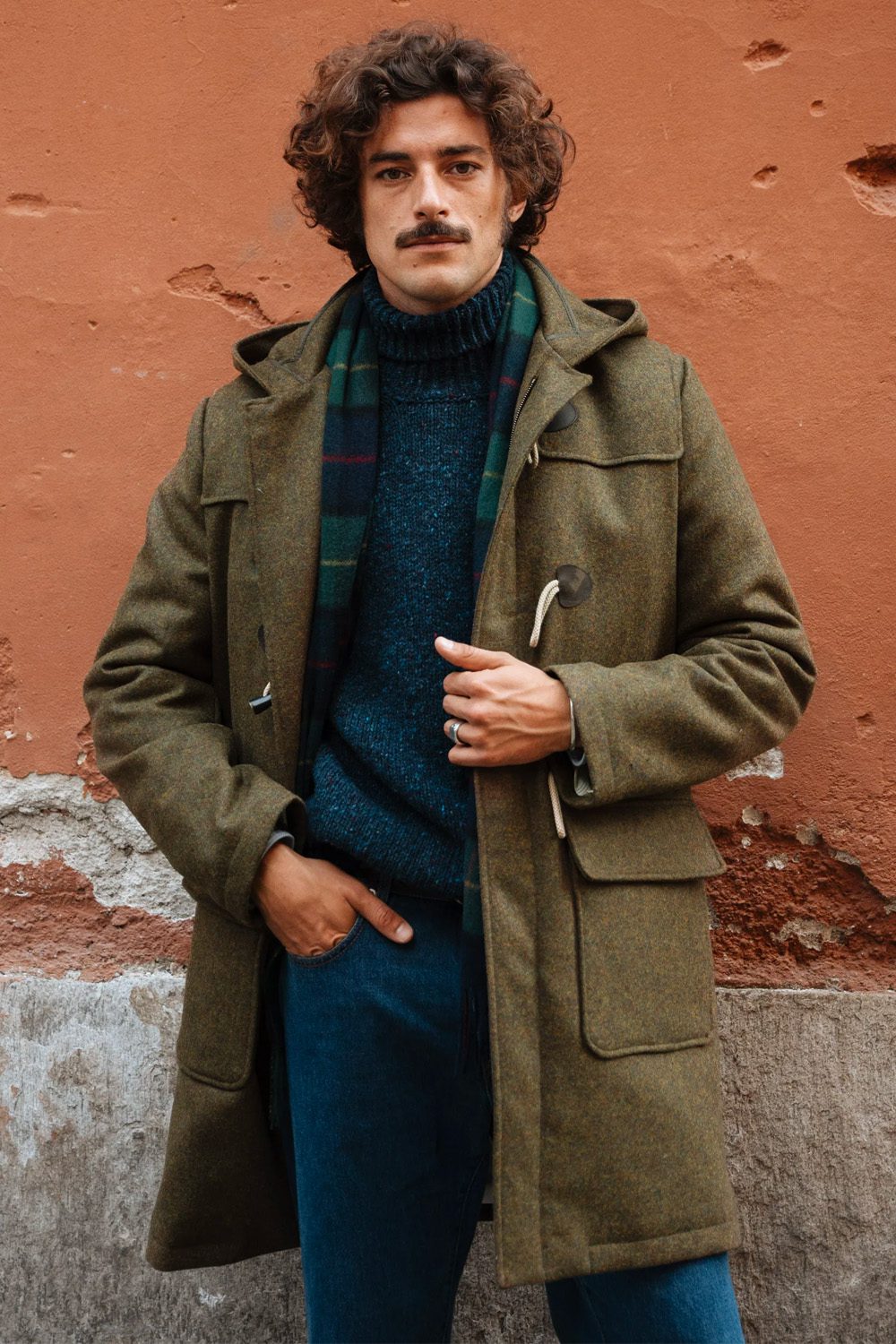
Velasca
It’s hard to look at the duffel coat without thinking of Paddington Bear. Dispel that from your mind and think more of, say, Field Marshall Bernard Montgomery, leader of the Eighth Army, wartime renegade and a man who loved the style.
The duffel was a garment that didn’t belong to any one service but which came to be associated with the Navy. It supplied duffel coats to sailors and merchant seamen to wear on deck duty, whatever the weather.
A simple, unlined, mid-thigh-length woollen coat, with big patch pockets and a hood, its toggle fastening was said to be easy to fasten while wearing gloves and/or when you could no longer feel your fingers. Indeed, nobody owned their duffel coat: it was a general-purpose item picked up by whoever needed it at the time – rating or officer alike – and left for the next man afterwards.
That’s probably not an arrangement that will work for you. But here’s a coat that works well over casualwear. Unexpectedly perhaps, it also looks good over suiting, particularly in a dark shade, and on a man ready to carry it off.
Ape Recommends
- COS Hooded Wool Duffle Coat
- Velasca Castelponzone Duffle Coat
- Drake’s Navy Wool Duffle Coat
- Gloverall Original Monty Duffle Coat
The Car Coat
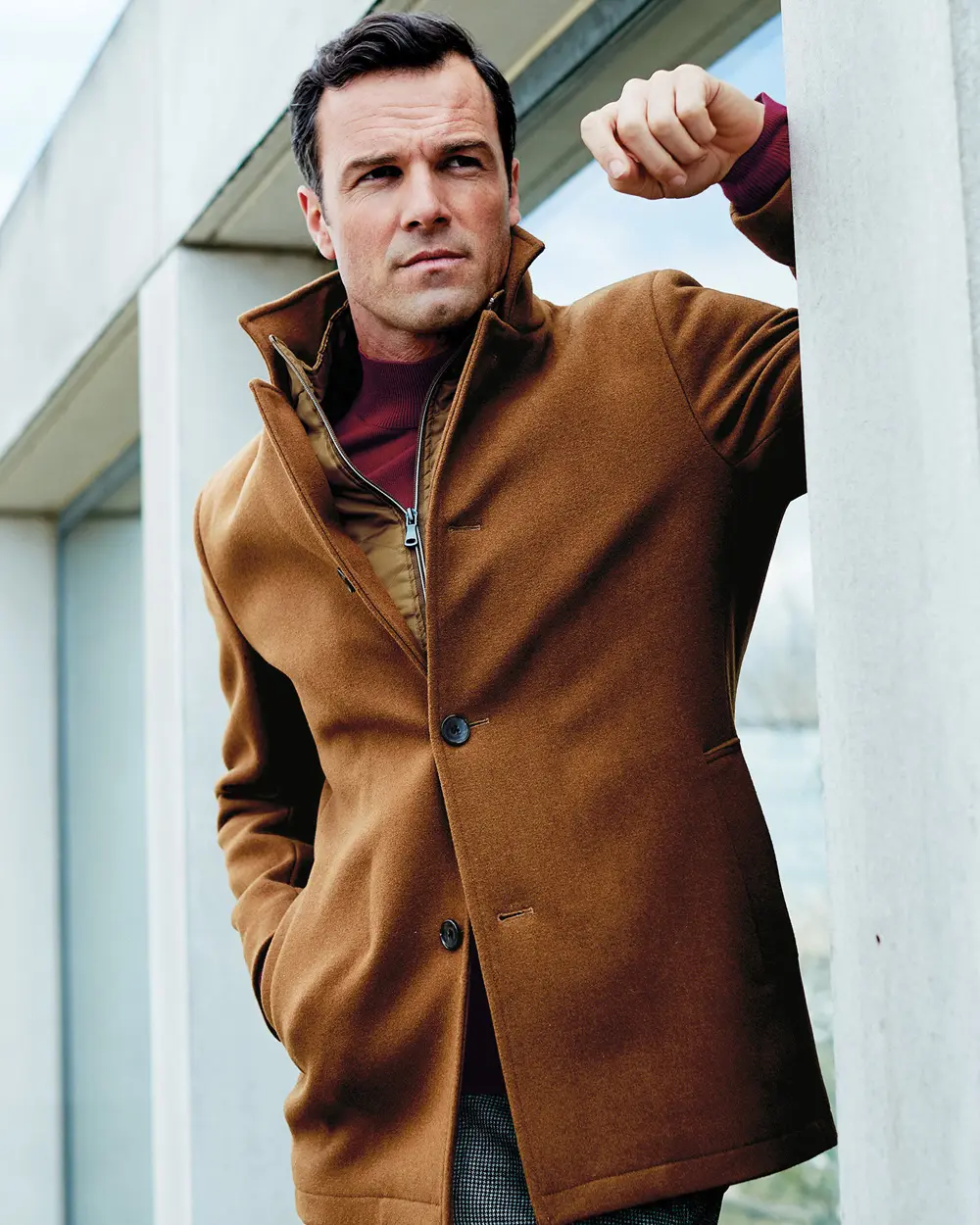
Brook Taverner
A car coat? Like, a coat designed for wearing in a car? Yes, precisely that. Once upon a time cars were very poorly insulated. Go even further back – to the early 1900s, when the car coat emerged – and they didn’t even have roofs. The car coat provided the solution to otherwise being both very cold and spoiling your “good” clothes underneath, and it’s an elegantly simple one at that.
The car coat is basically a single-breasted dense woollen layer, buttoned up to the neck, with a collar that can be turned up against the wind. It typically has two diagonal front welt pockets and is cut relatively short, to the upper thigh, with a slight A-line flair and without a rear vent, precisely to make it comfortable while seated.
It’s about a stripped back a coat design as one might imagine – practical, functional and easy to wear, which is why it was, in essence, the progenitor of the mac, which is in effect a car coat in a lighter waterproof fabric. The car coat is probably the least complicated of all coat designs, making it easy to wear in any way you choose.
Ape Recommends
- ASKET The Car Coat
- Closed Car Coat
- Paul Smith Twill Car Coat
- Arket Checkered Car Coat
The Parka

Closed
Is the parka an overcoat or just a coat? The latter is arguably less versatile when it comes to dressing up. It’s another military garment, of course, so the design itself is impeccable. First issued in 1945 as part of a ‘cold-weather system’ – an unlined hooded outer came with a warm liner – it was finessed in 1948 and again, for the Korean War, in 1951, and then again in 1965.
The most recent iteration is the fishtail version beloved of mods and Liam Gallagher, in a faster-drying cotton/nylon blend fabric, with a detachable fur-trimmed hood. It comes loose fitting but has belts and strings that ensure you and whatever you are wearing below remain protected against the elements.
Therefore, it – and the many variants now on offer: shorter ones, brighter ones, ones for climbing Everest, others more for a country walk – certainly works as a coat. The question is whether the style, undoubtedly good dressed down, still works when you need to look a little more polished. With the right pieces (think smart-casual and business-casual, rather than full-on three-piece), it certainly does.
Ape Recommends
- Aurélien Light Beige Cashmere Wintertime Parka
- Velasca Mombaldone
- Rains Fishtail Parka
- Todd Snyder Japanese Mid Down Parka
The Double-Breasted Overcoat
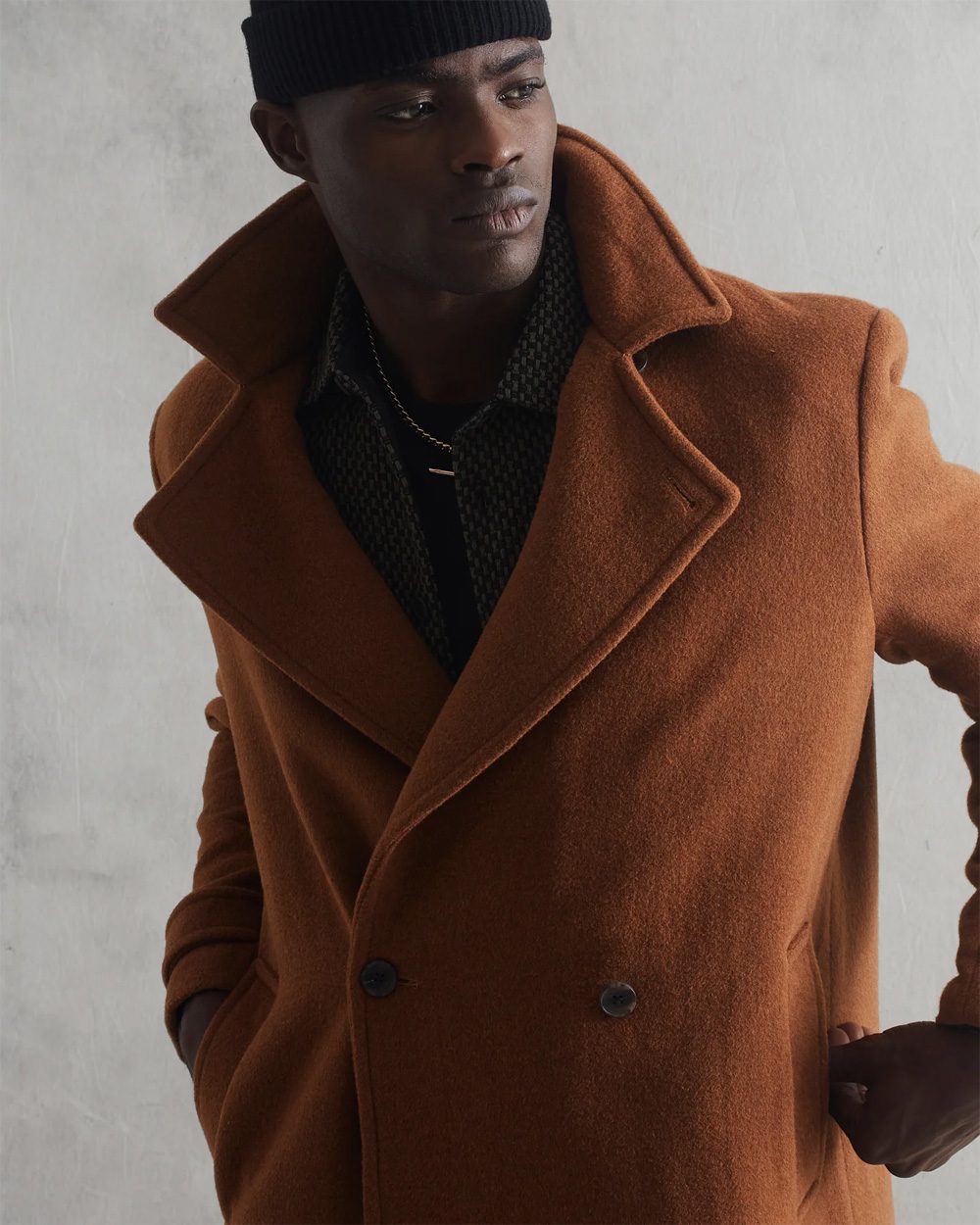
Wax London
Like its cropped cousin the pea coat, the double-breasted overcoat has a naval background. On the deck of a ship in the early 20th century, the double-breasted design bestowed an additional layer of protection against the wind and the spray. Officers, gentlemen and gangsters alike took the style onto dry land, where the style’s dramatic proportions spoke to power and elegance.
Characterised by twin rows of buttons at the front and a wide lapel and collar to be popped when the wind blows cold, this is a formal-looking coat. It’s at home over a suit. That’s not to say you can’t subvert it with casual dress but it’s not as versatile as others on this list.
For a modern take, check out Daniel Craig’s Bond sporting a formidable black style with sunglasses in Spectre.
Ape Recommends
- Closed Herringbone Coat
- Velasca Monforte
- COS Double-Breasted Wool Overcoat
- Todd Snyder Italian Peak Lapel Wool Topcoat in Camel
The Trench Coat
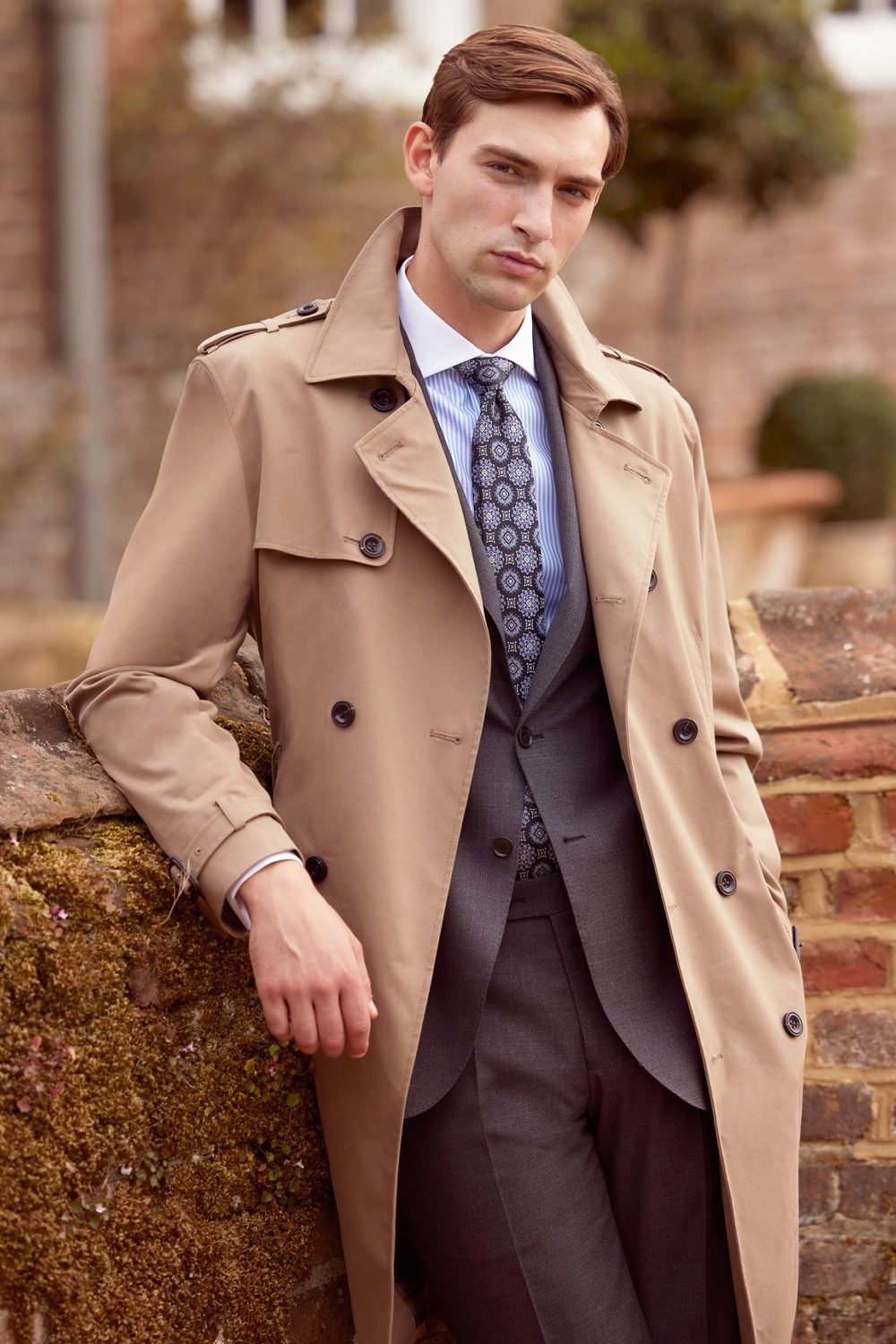
Hawes and Curtis Trench Coat
Here’s another example of Big Coat Energy that originated on the battlefield. The trench coat famously served in World War I where officers would wear it, funnily enough, in the trenches. Cold, wet, muddy and peppered with bullets and disease, trenches were deeply unpleasant places to be. A good coat – and it really is a good coat – offered some respite.
Then Humphrey Bogart came along. He and others made it the de facto style for heavy-drinking detectives, while Michael Caine gave it some espionage chic in The Ipcress File.
Today the style remains largely unchanged with some of its original functional features – the storm flap on the shoulder, the cuff tighteners – now bringing some stylistic flair as well as weather protection. You can get padded versions if you need extra warmth or colourful and patterned styles if you want to break away from the classic tan.
Ape Recommends
- Burberry Cotton Gabardine Trench Coat
- Mackintosh Earlston Trench Coat
- Moss Navy Trench Coat
- Burberry Gabardine-weave Trench Coat
The Mac
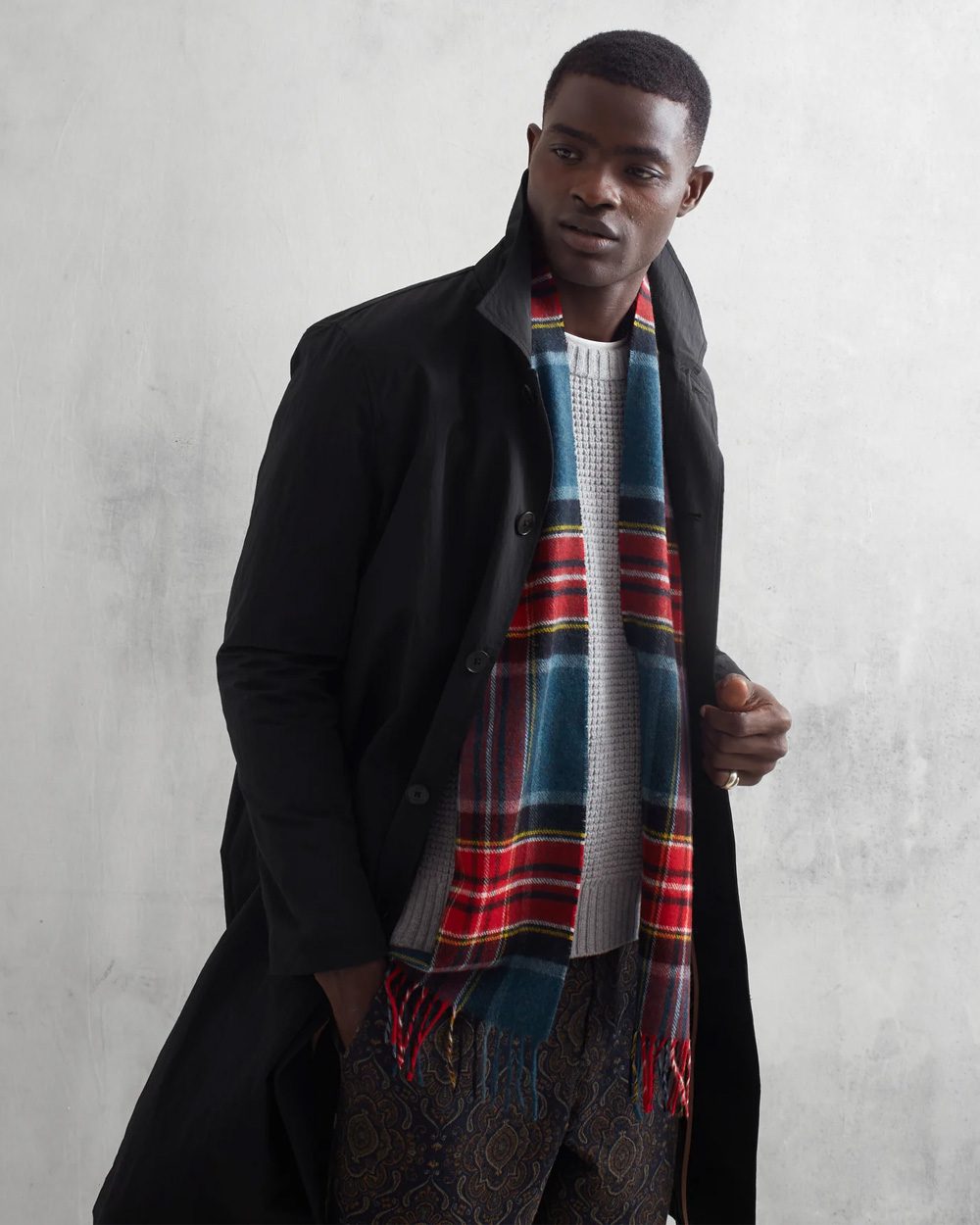
Wax London
Strip away all the bells and whistles of a trench coat and what you’re left with is basically a mac. A smart, weatherproof, three-quarter style that’s as versatile as it is practical. (It’s not like you need to advertise your rank, so those epaulettes on the shoulder are purely decorative anyway.)
The Mac also predates the trench. Back in 1824, Scottish chemist Charles Mackintosh worked out how to make cotton water repellent with a rubberised coating. The OG raincoat was born.
It looks much the same today: a clean silhouette with disguised buttons and a poppable collar and throat latch to keep the. chill out. Make sure it’s treated cotton if you want the rain to run off and look out for extra practical details like detachable linings to make it a coat for all seasons.
Ape Recommends
- Wax London Navarino Mac Black
- Private White VC The Ventile® Mac 3.0
- Mackintosh MANCHESTER RAINTEC Three-quarter Coat
- Sunspel Showerproof Cotton Mac

